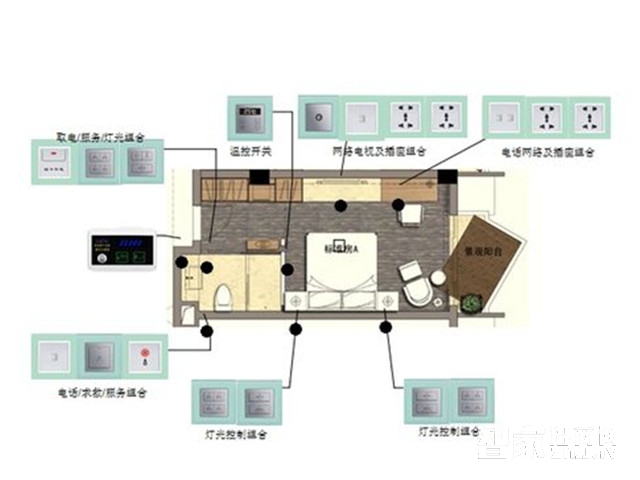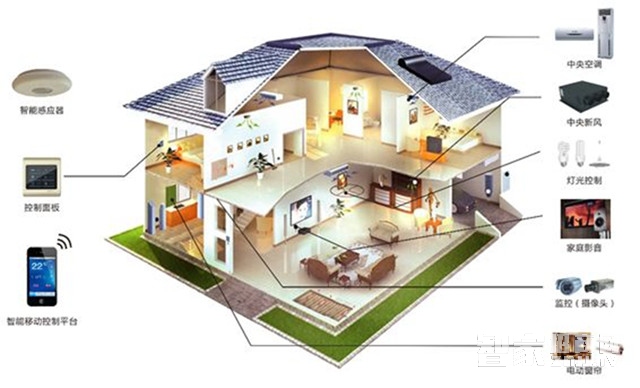In the era of information technology, the concept of smart homes has gradually gained popularity, and the scope of home wiring has expanded significantly. Currently, smart home systems are primarily categorized based on their wiring methods, with three main technologies: centralized control, fieldbus, and wireless communication. This article provides a detailed overview of these control technologies.

**1. Fieldbus Technology**
Fieldbus control systems use a system bus to network lighting, electrical appliances, and alarm systems, enabling signal transmission. This decentralized approach allows each functional module within the network to connect directly to the bus, making installation more efficient. Fieldbus supports various topologies, including star and ring structures, and its wiring for strong circuits like lighting and outlets is similar to traditional methods. The concept of "one light, multiple controls" is common in residential applications. Previously, this was achieved using double or quadruple switches, which were complex and costly. With fieldbus, no extra wiring is needed, offering a fully distributed intelligent control solution. These modules support two-way communication, interoperability, and programmable control. A typical fieldbus uses twisted pair cabling, where each node receives power (24V DC) from the bus and communicates without polarity or topological restrictions. The system can handle data rates up to 10KBPS or 4G.
The fieldbus system consists of a power supply, twisted pair cables, and functional modules connected in series. It offers several key functions:
- **Basic Control**: Includes power supply, wireless remote interface, telephone remote interface, computer control interface, Ethernet (TCP/IP), security interfaces, etc.
- **Light Control**: Uses electronic switches or dimmers that resemble standard switches, allowing for easy replacement and intelligent lighting control.
- **Electrical Control**: Smart sockets that replace traditional outlets, enabling remote control of appliances like rice cookers and washing machines.
- **Infrared Control**: Used for controlling devices like air conditioners and TVs, with learning and memory functions for infrared signals.
- **Security Control**: Includes sensors for motion detection, gas leaks, smoke, and video intercom systems, all compatible with the bus for remote alarms.
**2. Centralized Control Technology**
This method relies on a central host unit, typically based on a microcontroller, responsible for signal processing. The mainboard integrates peripherals such as security alarms, telephone modules, and I/O circuits. However, due to system limitations, expanding the number of control loops after installation is challenging. Star-type cabling is used, requiring all devices to connect to the main box, increasing complexity compared to traditional wiring.
**3. Wireless Communication Technology**
Wireless smart home systems include:
- Star connection
- Bus connection
- Power line carrier
- Infrared (IR)
- Radio Frequency (RF)

**Which Wiring Method is Best?**
From a **stability** perspective, star connections are the most reliable, followed by bus, power line carriers, infrared, and wireless. Traditional security systems use star connections, making them the most dependable. While bus connections require some wiring, they are more efficient when dealing with many points. Power line and wireless systems face challenges with interference between neighboring homes, though isolation and frequency hopping can help mitigate these issues. Wireless solutions are generally less ideal for security systems due to reliability concerns.
From a **market** standpoint, different scenarios require different approaches:
- **New residential areas** should prioritize reliability, often using star connections.
- **Home improvement projects** may need more personalized features and scalability, making both star and bus methods suitable.
- **Old home renovations** often favor minimal wiring, so power line and wireless options are more practical.
In real-world applications, a **hybrid approach** combining multiple wiring methods is often the best solution. For example, security systems benefit most from star connections, while other devices like lights and appliances can be controlled via bus, power line, wireless, or infrared.
**Related Suggestions:**
- Article: How to Wire a Smart Home? A Comprehensive Guide
- Recommended: Health Monitoring Products & Security Franchise Opportunities
High Speed Connector
High Speed 6PIN Female Connecor for Cable,High Speed GT32 4 PIN Female Connector,High Speed Connetor
Dongguan Zhuoyuexin Automotive Electronics Co.,Ltd , https://www.zyx-fakra.com